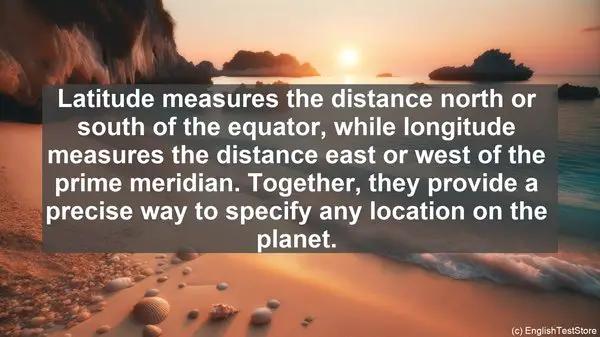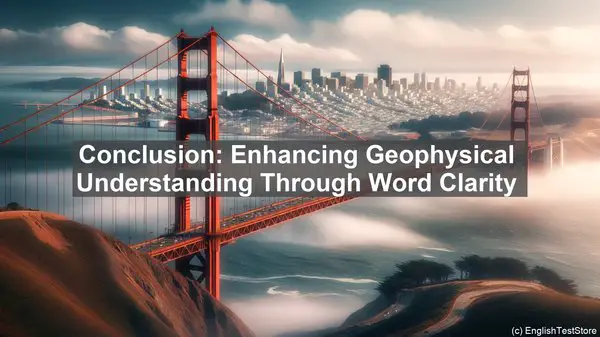Introduction: The Importance of Clear Communication in Geophysics
As geophysicists, our work involves studying the Earth’s physical properties and processes. But it’s not just about collecting data; we also need to effectively communicate our findings. That’s why understanding the correct usage of certain words is crucial. In this lesson, we’ll explore the top 10 words that often trip up students. Let’s get started!
1. Epicenter vs. Hypocenter: Understanding Earthquake Terminology
When discussing earthquakes, the terms ‘epicenter’ and ‘hypocenter’ often come up. The epicenter refers to the point on the Earth’s surface directly above the earthquake’s focus, or hypocenter. While the epicenter is what we usually hear about in news reports, it’s the hypocenter that’s of more significance to us as geophysicists, as it’s the actual point where the earthquake originates.
2. Velocity vs. Speed: Not Just Synonyms
In everyday language, ‘velocity’ and ‘speed’ are often used interchangeably. However, in geophysics, they have distinct meanings. Speed refers to the distance traveled per unit of time, while velocity not only considers the magnitude of the speed but also the direction. So, while two objects may have the same speed, their velocities can be different if they’re moving in different directions.
3. Weather vs. Climate: The Difference in Time Scales
Weather and climate are terms we often hear, but they refer to different time scales. Weather describes the atmospheric conditions over a short period, such as a day or a week. On the other hand, climate refers to the long-term patterns and averages of weather in a specific region. Understanding this distinction is crucial when analyzing geophysical data for climate studies.
4. Conduction vs. Convection: Modes of Heat Transfer
Heat transfer is a fundamental concept in geophysics. Conduction and convection are two primary modes of heat transfer. Conduction occurs when heat is transferred through a material without any actual movement of the material itself. Convection, on the other hand, involves the transfer of heat through the movement of the material, typically in a fluid state. Both processes play significant roles in the Earth’s energy balance.
5. Latitude vs. Longitude: Navigating the Earth’s Grid
Latitude and longitude are the coordinates used to pinpoint locations on the Earth’s surface. While both are measured in degrees, they represent different aspects. Latitude measures the distance north or south of the equator, while longitude measures the distance east or west of the prime meridian. Together, they provide a precise way to specify any location on the planet.

6. Magnitude vs. Intensity: Assessing Earthquake Effects
When we talk about the strength of an earthquake, we often use the terms ‘magnitude’ and ‘intensity.’ Magnitude refers to the energy released at the earthquake’s source, as measured by seismographs. Intensity, on the other hand, describes the effects of the earthquake at a particular location, taking into account factors like building damage and human perception. So, while two earthquakes may have the same magnitude, their intensities can vary.

7. Isostasy vs. Lithostatic Pressure: Balancing Forces in the Earth’s Crust
The Earth’s crust is subject to various forces, and two important ones are isostasy and lithostatic pressure. Isostasy refers to the equilibrium between the crust and the underlying mantle, with the less dense crust ‘floating’ on the denser mantle. Lithostatic pressure, on the other hand, is the pressure exerted by the overlying rocks due to their weight. Understanding these concepts helps us comprehend the dynamic nature of the Earth’s crust.
8. Geoid vs. Ellipsoid: Models of the Earth’s Shape
When we think of the Earth’s shape, we often imagine a perfect sphere. However, in reality, the Earth is not a perfect sphere but an ellipsoid, with variations in its shape. The geoid, on the other hand, is a model that represents the Earth’s shape, taking into account factors like gravity and the distribution of mass. Both the geoid and the ellipsoid are essential for accurate geodetic measurements.
9. Anomaly vs. Background: Identifying Deviations in Data
In geophysics, we often analyze data to identify anomalies, which are deviations from the expected or ‘background’ values. An anomaly can indicate the presence of a geological feature or a change in a physical property. By distinguishing anomalies from the background, we can gain valuable insights into the Earth’s subsurface.
10. Moho vs. Mohorovicic Discontinuity: The Boundary Between Crust and Mantle
The Moho, short for Mohorovicic discontinuity, is a significant boundary in the Earth’s interior. It marks the boundary between the crust and the underlying mantle. Named after the Croatian seismologist Andrija Mohorovicic, the Moho is not a simple, uniform boundary but rather a zone of transition with variations in its depth and characteristics.

